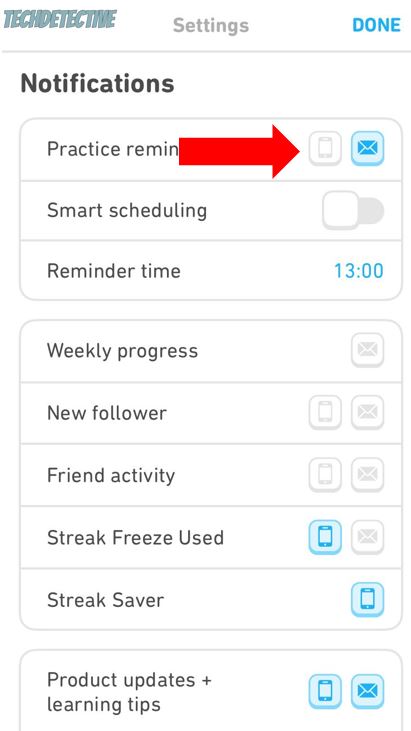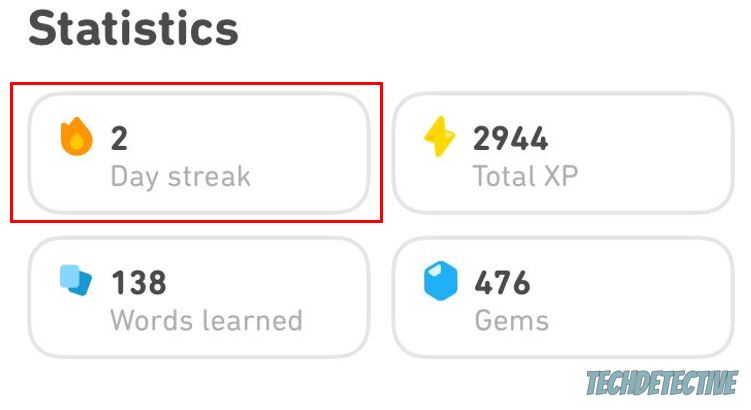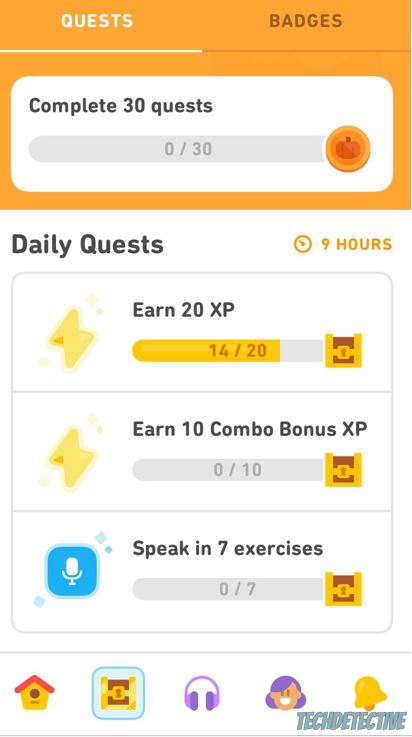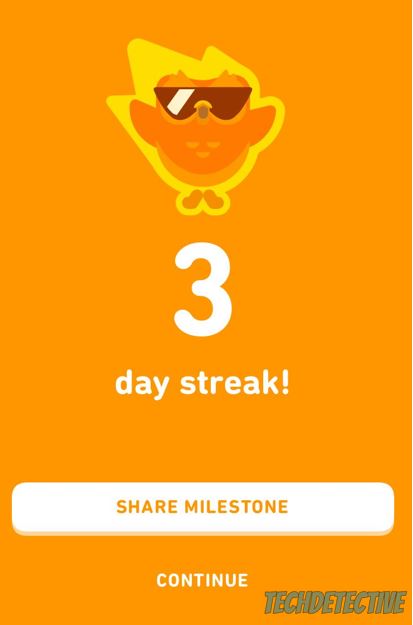
Can’t stop using Duolingo?
You wouldn’t believe how many users are in the same situation as you.
Honestly, I’m not surprised. Duolingo’s creator, Luis Von Ahn, added video game features to the app (gamification) so that people can’t stop using it.
Although gamification has improved student productivity by 50%, many people debate whether it is ethical to use these techniques because they can create dependency.
In this article, you’ll learn more about the way Duolingo uses gamification to motivate people.
The 7 tactics that Duolingo uses to be so addictive are:
Read on to learn more about Duo’s addiction!
Duolingo has become one of the most addictive learning platforms in the market due to multiple reasons. One of them is Duo, the platform’s mascot.
Duo is an owl that keeps you motivated whenever you complete a lesson or a challenge.
But, if you don’t enter the app and lose your streak, the platform will send an email or push notification including an image of Duo crying that can make you feel like the worst person in the world.
Normally, Duo sends daily reminders, but if users don’t respond to them, it will start sending passive-aggressive notifications because it makes people open the app and continue with their lessons.
These notifications include phrases like “You made Duo sad”, “You’ve let Duo down”, or “These reminders don’t seem to be working, we’ll stop sending them for now”.
But why do these notifications work?
Simple. Duolingo guilt trips you into accessing the app by playing with different emotions, such as anger, sadness, guilt, and fear.
This technique is very famous and has been used by different non-profit and green companies to influence consumers’ behavior.
But, if you don’t want to receive Duo’s notifications, you can disable them. To do it, you’ll just need to:

A streak keeps track of how many days in a row you’ve been practicing a new language. This is one of Duolingo’s most addictive features.
To maintain your streak, you’ll need to complete at least one lesson per day. The higher your streak, the more likely you’ll access the app every day.
You see, a streak is a gamification feature that gives users a sense of pride in their achievements, resulting in behavior reinforcement. People are motivated by the fear of losing their Duolingo streak.

The sunk cost fallacy can also explain why people will do anything to maintain their streaks.
You see, studies have shown that the more you invest in something (time, money, or effort), the more likely you’re to continue that behavior.
For example, if you’ve invested a lot of time and effort in maintaining your streak, you’ll likely continue completing a new lesson every day.
And if you ever lose your streak, Duolingo offers different ways to recover it. This way, if you pay for a streak freeze, they can earn some extra money, and they can also keep you motivated to enter the app every day.
Different apps use streaks, such as Candy Crush and Snapchat. Two of the most addictive platforms out there.
As you may already know, experience points (XPs) can be earned by simply completing a lesson or a new challenge.
Users can set a daily XP goal and whenever they reach it, they’ll earn lingots or gems, Duolingo’s virtual currency.
They can also earn lingots by simply maintaining their streak, inviting friends, winning a league, and even completing a lesson without losing any hearts.
Lingots can help users buy things on Duolingo’s store, such as streak freezes.
Duolingo also gives exclusive badges and crowns to users who complete hard challenges and move up a level in difficulty.
As you noticed, Duolingo constantly rewards users, so they can stay motivated and continue using the app.
But, why is this so addictive?
Simple. Every time a reward is earned, your dopamine levels increase.
You see, dopamine is a chemical produced in our brains that makes us feel good. It is usually released whenever we do something to meet our needs, we’re expecting a reward, or we do something pleasant, such as eating our favorite food or playing games.
Studies have shown that dopamine motivates us to repeat those behaviors that made us feel good. This is why earning XPs, badges, lingots, and crowns can become so addictive.
Duolingo’s exercises may also be the reason you’re addicted to the app. They are fun, entertaining, and engaging.
Moreover, you don’t have to make a lot of effort or invest a lot of time in learning a new language because you can complete a lesson in less than five minutes.
This way, you can get rewards (and release dopamine) quickly.
Likewise, you can complete Duolingo’s lessons wherever you are. You see, the platform allows you to say “I can’t listen right now” or “I can’t speak right now”.
This way, the app will customize the exercises, and you’ll be able to practice even if you’re in a public space.
This is why maintaining your streak and continuing to use the app is so easy…and addictive.
Duolingo recently released a new section in their app called “Quests”, which includes a monthly challenge and a set of 3 challenges that you need to complete every day.
The platform wants you to get back for more. This is why they reward you with badges and XPs every time you complete these challenges.
As we learned in section #3, these rewards lead to a feeling that we want to have again. This is why completing the daily quests can become so addictive.

Duolingo’s bright colors are no coincidence. They can be the reason why you keep using the app every day.
You see, colors can interfere with your behavior because they’re associated with emotions. This is why brands use them to attract consumers and increase brand recognition.
Each color is related to a different emotion. Let’s examine Duolingo’s main colors:

As you noticed, Duolingo’s colors can make us feel motivated and happy, which could explain why the app is so addictive.
As you may already know, Duolingo allows you to follow friends, motivate them to complete lessons or reach a specific goal, and celebrate their accomplishments.
You can also compete on Duo’s leaderboards with your friends and other users, which could explain why Duolingo is so addictive.
You see, studies have shown that competition has always motivated humans. By completing more lessons or earning more XPs than your friends, your brain will produce a rush of dopamine, resulting in wanting to experience this feeling again.
There’s nothing wrong with competition, but if it starts feeling like an addiction, maybe it’s time to stop using Duolingo for a while.
That about covers it!
If you take anything away, please let it be that Duolingo is so addictive because of its gamification features, such as streaks and XPs.
Remember, dopamine is released every time you earn a reward, which will make you want to experience this rush again.
Thank you so much for taking the time to read this article. If you ever experience a tech issue while using Duolingo or other platforms, don’t forget to check out our site. We love helping people tackle everyday problems.
Have a wonderful day!